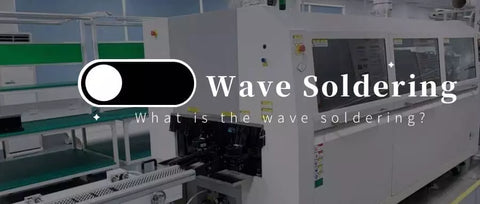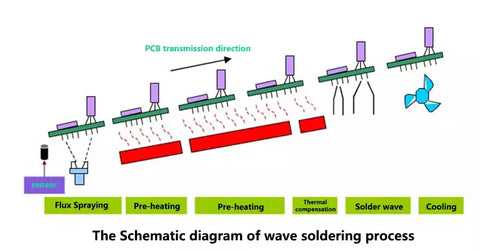In wave soldering, an artificial wave is created using the wave soldering machine. It looks like the waves we see in a sea, but the wave is of dissolved tin, and we can also call it dissolved solder. A PCB containing the components passes over the wave, and solder is applied to it.

Wave Soldering Process

The process of wave soldering consists of four steps.
- Flux Spraying: In the first step, flux is sprayed because it is necessary before the application of solder. It cleans the PCB and offers various benefits. It removes the oxides from the surface and prevents the formation of oxides during the soldering process.
- Pre-heating: The next step is pre-heating. It heats the PCB so that the solder can be easily applied to the board.
- Wave Soldering: Now, the PCB goes over the wave of molten tin. The solder is applied over the PCB.
- Cooling: After the application of hot solder on the PCB, it is allowed to cool down.
